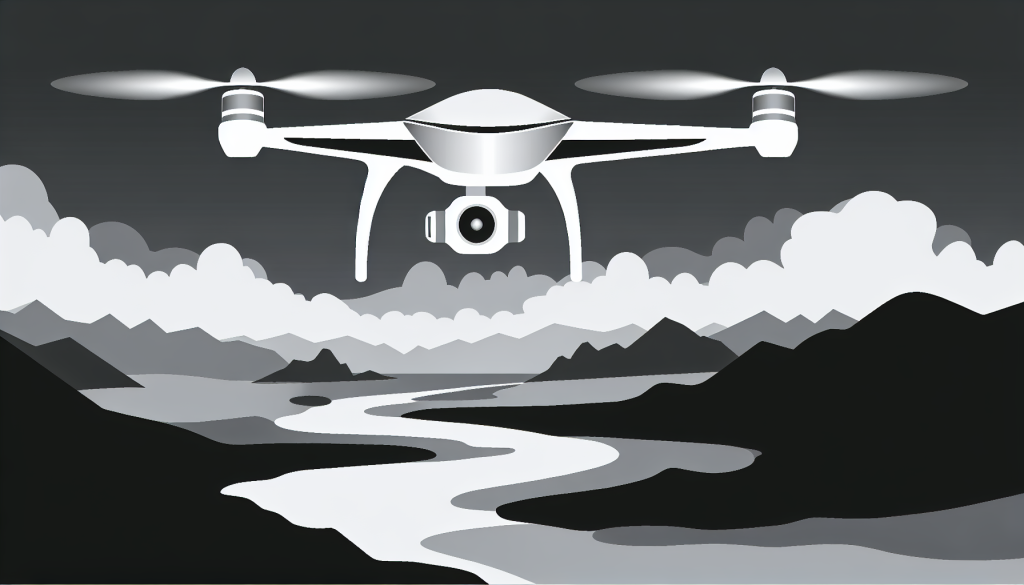North Korea’s Expanding Military Drone Program
In mid-September, Kim Jong Un visited North Korea’s Unmanned Aeronautical Technology Complex, highlighting the nation’s commitment to developing its military drone capabilities. He described advancements in core technology and artificial intelligence for drones as a “top-priority” task for modernizing the Democratic People’s Republic of Korea (DPRK) armed forces. Kim emphasized the urgency for enhancing production capacity, signaling a substantial step in North Korea’s military strategy.
Historical Context of Drone Development
North Korea’s drone program has evolved over the years, traceable at least back to 2011 when it acquired several U.S. MQM-107D Streaker drones from a Middle Eastern country, allegedly Syria. State media confirmed this acquisition in 2013, showing footage of Kim attending military drills that featured drone demonstrations. The initial forays into drone technology were modest, culminating in several crashes in South Korea, where drones equipped with cameras were discovered.
Fast forward to 2023, and this historical foundation has transformed into a more ambitious endeavor, marked by the unveiling of the Saetbyol-4 and Saetbyol-9 drones. These developments indicate a shift towards advanced domestic production and technological enhancements.
Key Drone Models: Saetbyol Series
Saetbyol-4 (Morning Star 4)
The Saetbyol-4 has been dubbed a “strategic reconnaissance drone” and is considered the largest model North Korea has revealed. With a wingspan of roughly 35 meters, it closely resembles the U.S. RQ-4 Global Hawk. Powered by a turbojet engine, analysts suggest its design borrows elements from the MiG-21, a model previously operated by North Korea’s Air Force.
Its first notable appearance came during a weapons exhibition in July 2023, and it was later seen flying over Pyongyang, confirming its operational functionality. To date, North Korean media has indicated that there are at least two operational units of the Saetbyol-4.
Saetbyol-9 (Morning Star 9)
The Saetbyol-9 serves as a “multi-purpose combat drone” and bears similarities to the U.S. MQ-9 Reaper. Smaller than the Saetbyol-4, it has an approximate wingspan of 20 meters and is powered by a propeller engine. North Korea has reportedly manufactured at least six units, with various serial numbers observed during public displays. The Saetbyol-9 has been depicted in action, showcasing missile capabilities during military propaganda broadcasts.
The Kumsong Series: Tactical Developments
In 2024, a new set of smaller drones known as the Kumsong series emerged. Unlike their larger counterparts, these tactical attack drones have yet to be publicly tested in a significant way. Illustrations in state media often employ heavy mosaic effects, obscuring specific details about their design and capabilities. However, images indicate they have been utilized in test scenarios against vehicular targets.
This series implies North Korea’s focus on diversifying its drone capabilities to accommodate various strategic needs.
Evaluating Capabilities
While North Korea’s drone showcases appear visually impressive, concrete information about their actual capacities remains elusive. Although there are images and videos of drone flights and attacks, specifics regarding guidance systems, operational range, and overall precision are not publicly verified. The state media’s inclination to present still images instead of action footage raises questions about the drones’ reliability in real combat scenarios.
However, North Korea’s history of weapon system developments suggests that dismissing these advancements as mere propaganda would be premature.
The Strategic Importance of Panghyon Airfield
Panghyon Airfield has evolved into a crucial site for North Korea’s drone development. Conveniently located about 110 kilometers from Pyongyang and close to the Chinese border, the facility has served multiple military purposes for decades. Adjacent to the airfield, significant manufacturing and assembly plants have operated, producing parts and assembling various aircraft types.
Recent upgrades to the Panghyon site, including additional hangars and equipment, point to a long-term commitment to enhancing North Korea’s drone manufacturing infrastructure.
Observational Insights
The ongoing conflicts in regions like Ukraine and Gaza have underscored the pivotal role drones play in modern warfare. Kim Jong Un’s recent push for increased production and development of advanced drones reveals not just an awareness of international military trends, but also a proactive approach to modernizing the DPRK’s military capabilities.
As North Korea continues investing in its drone technology, future advancements and potential acquisition of sophisticated weaponry are on the horizon, signaling a shift in the military dynamics of the region.

